“Having grown
up in the country,
I knew we have
cacao, but it's not
normally turned
into high quality
chocolate bars – it
is usually exported
as a raw material or
turned into a native
hot chocolate.” - Philo Chua
For many makers of small-batch, handcrafted chocolate, it is
often love at first bite. Five years ago, Jay Chua was gifted with
a Madagascar single origin craft chocolate bar for Christmas
and it blew him away. It was full of raspberry and almond flavour,
but there were only two ingredients on the list - cacao and sugar.
“It was then that we realised the taste of chocolates could be
so flat with commercial bars yet so flavourful with craft chocolates.
Since then, we started to experiment with cacao, and making small
batches,” says Chua, who is now the chief chocolate maker at Fossa,
Singapore's first and award-winning artisanal bean-to-bar craft
chocolate outfit
Philo Chua, founder and owner of Theo & Philo Artisan
Chocolates in The Philippines, discovered single origin chocolates
while he was working in the States and was intrigued by how it
could highlight the cacao taste of a specific
region or country, much like wines.
"There was no single origin chocolate
highlighting the cacao beans from the
Philippines. Having grown up in the
country, I knew we have cacao, but it's
not normally turned into high quality
chocolate bars – it is usually exported
as a raw material or turned into a native
hot chocolate. I made a snap decision to
return home and explore this untapped
potential,” he says. Theo & Philo Artisan
Chocolates started operations in 2010 and
has gone on to become a multi-award
winning brand, most recently clinching
silver, among other awards, for their Milk
Chocolate Adobo at the UK’s Academy of
Chocolate Awards 2018.
Ong Ning-Geng moved to Kuala
Lumpur from Chicago in 2010 looking for
adventure, which he found in the form of chocolate. Chocolate
fascinates him on many facets (fermentation, gastronomy, farming,
genetics, sensory science, design, physics, and nature, just to name
a few), and he founded Chocolate Concierge in 2015.
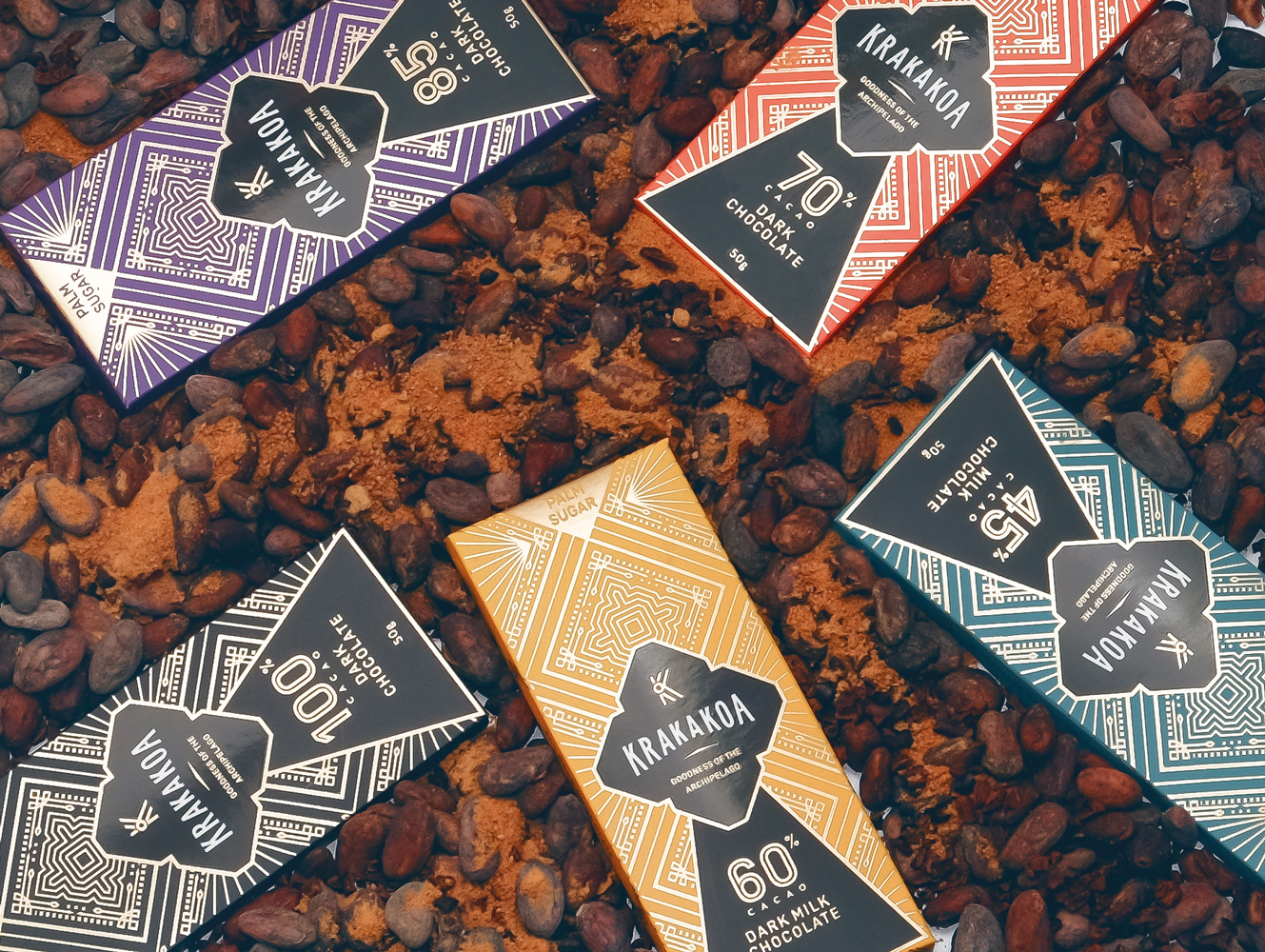
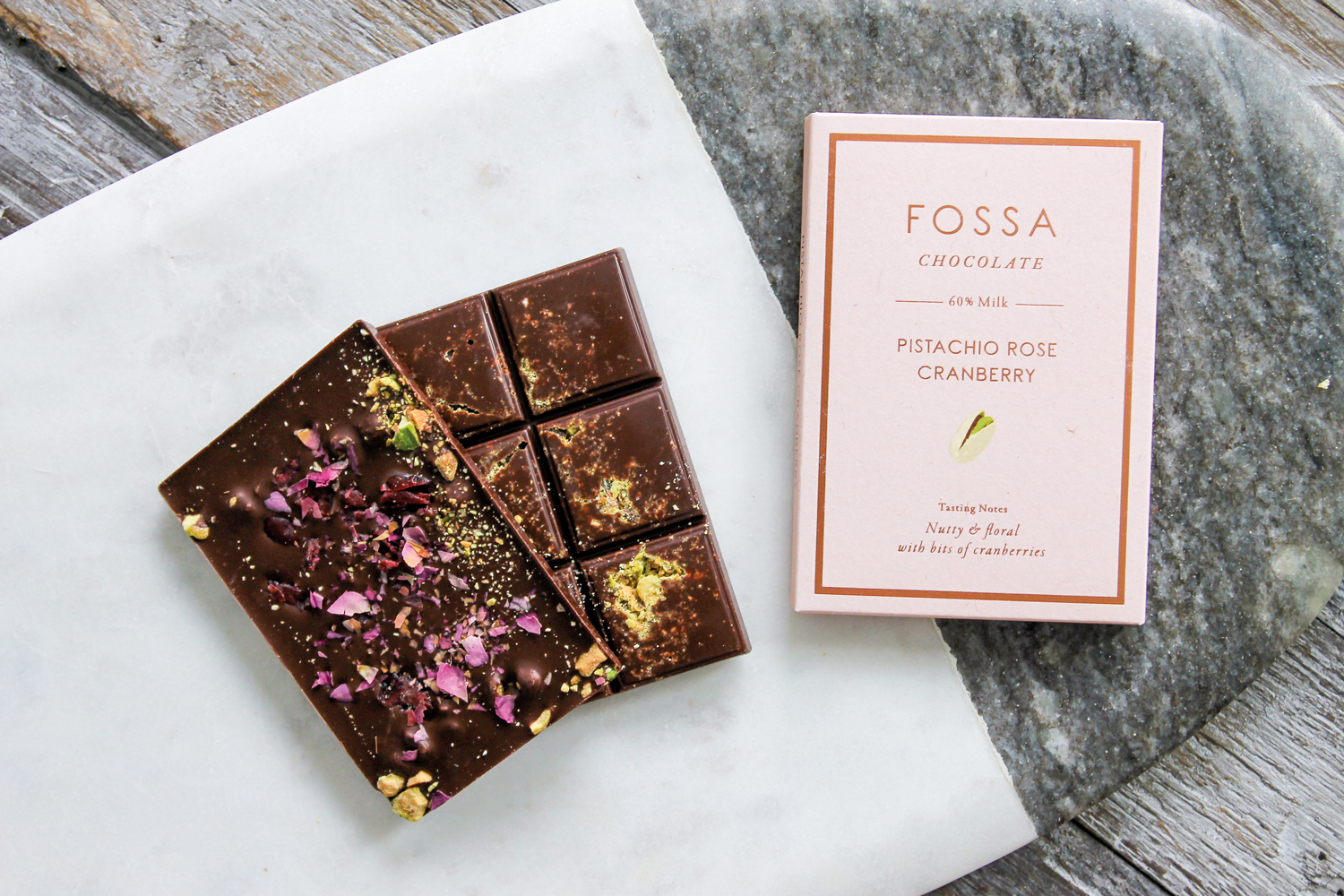
“Looking back, I was rather naive and optimistic -- knowing
that Malaysia grows cocoa and seeing a regional demand for
chocolate, I thought I could connect the dots and make it at source.
My first challenge was to find cocoa beans that had the flavour
potential to put something new amidst the well-established brands.
This meant that the cocoa had to go through each process with the
conscious drive for flavour. That was difficult to achieve without
direct control at the farm level,” reveals Ong. To get around that
problem, he bought a farm to grow his own cacao beans.

At Krakakoa, producing chocolate is a way to drive the change
that they want to see: provide jobs and contribute to economic
development. They source only from smallholder farmers and
maintain production in Indonesia.
Its mission, according to Sabrina Mustopo, chief executive
officer of the Indonesian chocolate brand, is to change the way
food production systems impact people and the planet, starting
with cocoa. The company provides training and higher prices (up
to three times of market price) to empower farmers and provide
incentives for sustainably managed plantations and the production
of high quality cocoa beans.
As for Vietnamese chocolate brand Stone Hill, products
director Loc Pham tells of an arduous journey that led to the brand’s
founding. Cacao was first brought to Vietnam by French colonials
in the 1890s. When Vietnam gained
independence, USSR became the main
buyer of Vietnamese goods, and when the
USSR collapsed in 1990s, many of Vietnam's
industries fell with it. The cacao industry
of Vietnam collapsed. Most cacao farmers
cut down their cacao trees and replaced it
with other industrial crops, such as coffee,
rubber, tea, or fruit trees
Some time between 1997 and 1998,
Pham’s father Dr. Pham Hong Duc Phuoc
led a programme (set up by the World
Cocoa Foundation and Nong Lam University
- University of Agriculture and Forestry) to
“observe adaptability and productivity of
cacao variety in Vietnam”. The selected
varieties will then be released to Vietnamese
farmers to be grown. The program would
also train and educate the farmers in the
ways of growing and pre-processing cacao
beans to be sold as a commodity. After many years of research,
soil rehabilitation work and forest restoration efforts, Dr. Phuoc
managed to produce really high-quality cacao beans at his farm,
along with other local farmers, but alas, there was no market for
premium quality cacao beans
“Our beans along with the farmers' were sold into the mass
market to be mixed with beans of various quality. Our effort and
story lost in the mix. Seeing this situation, I felt a sense of frustration
and entered the business in 2013,” explains Pham, “To remind us of
the difficulties we faced and a tribute to the harsh and rocky terrain
of the farm, I called it Stone Hill Farm and launched it in 2014. The
goal is to develop and expand as many high quality uses for cacao
as possible, utilising all parts of the cacao tree."
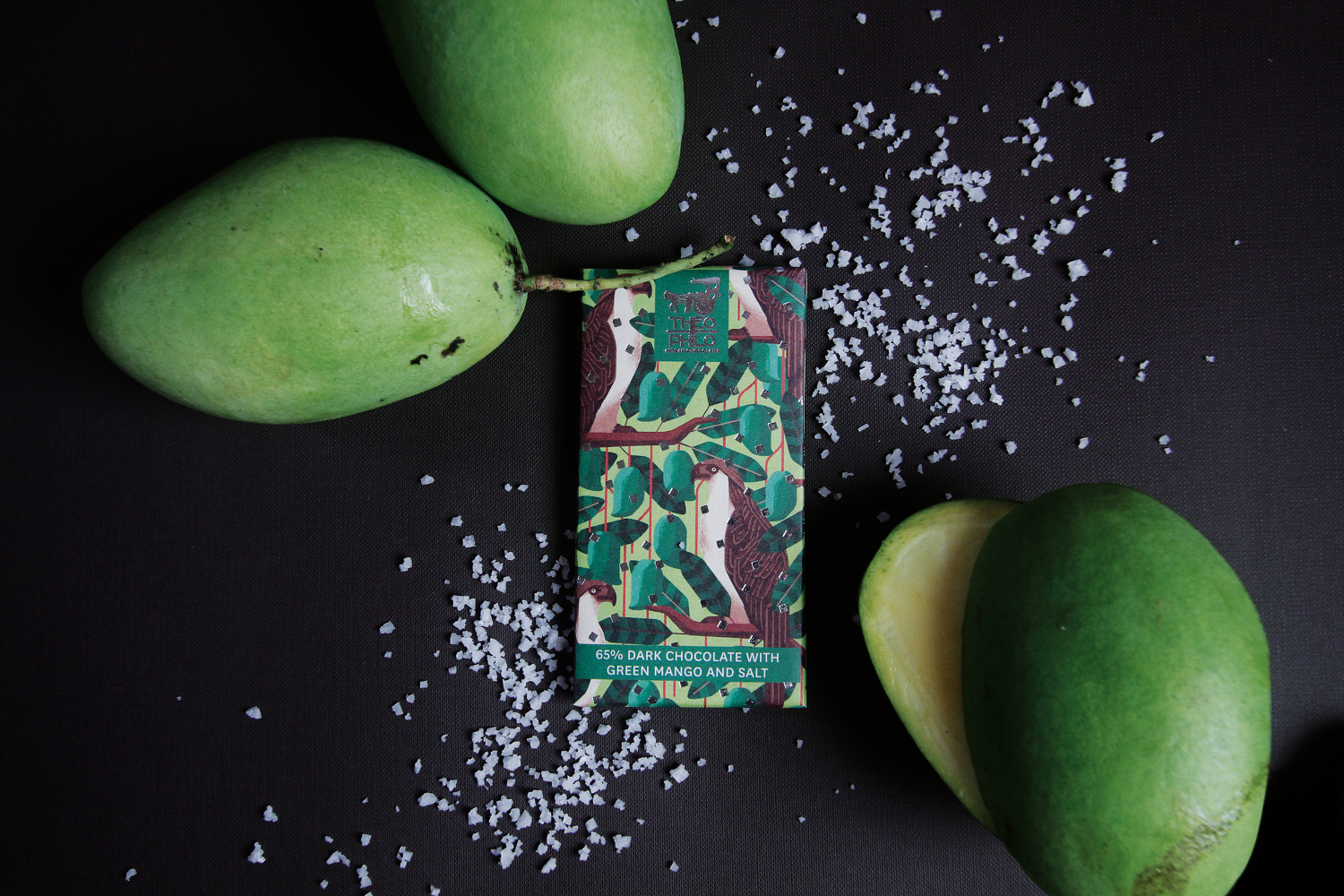
A burgeoning market
Pham tells us that chocolate appreciation in Vietnam is rising, albeit
still at a slow pace. It is after all “not part of Vietnam's traditional
food so it is still a new delicacy, to be enjoyed on rare occasions.
Hopefully, that is to change in the coming years”
“There's been an influx of many bean-to-bar chocolate makers;
many of these are also coming from cacao producing countries,
which was very rare in the past,” says Chua. He attributed this trend
to “accessibility of information and people being more educated
about the stuff they consume and where it comes from”
“In our particular case, demand for artisan chocolates has
also risen locally due to also the pride that people feel for having a
premium chocolate product made out of local cacao that is on par
with the world's standards--which is especially true for chocolates,
a product that has traditionally been associated with North America
or Europe,” he emphasises.
Ong reckons that “we are at the pivotal point where there is
enough momentum behind artisanal and craft chocolate to tip it
into the general awareness of chocolate lovers”.
“There has been an increased awareness for craft, speciality,
single origin, bean to bar, direct trade chocolate. In part thanks to
the general heightened awareness for other artisan products like
coffee, cheese, wine, and whisky,” he says.
“There was no market for craft chocolate in Singapore when
we first started out,” says Yilina Leong, business director of Fossa,
which was launched in 2017.
“The chocolate that we make is labour intensive and require
high quality ingredients that are sometimes difficult and expensive
to source. In a market flooded with cheap mass-produced chocolate
that people are used to, it is an uphill task to change consumers' and
retailers’ mindsets that good chocolate should be priced reasonably
higher. We have not fully overcome this challenge yet, but we’re
doing our best to make even better chocolates in the hopes that
there will be more ‘ah-ha!ʼ (this chocolate is so good, I know why it’s
more expensive) moments for people,” Leong says.
Mustopo echoes similar sentiments. “The artisanal or craft
chocolate market in Indonesia is growing. We are seeing a lot
more chocolate makers, and there is a growing awareness among consumers about the difference between artisanal
chocolate and mass-produced chocolate. However, the
industry is still in its infancy and most of the general
public still do not understand what fine flavour chocolate
is, and what artisanal chocolate is, particularly here in
Asia compared to say, the USA,” she says
The prominent type of chocolate made is still bulkto-bar and the world's bestsellers are still sugary milk
chocolate, laments Pham
“The most notable difference in mass consumer
chocolate is the pursuit of certifications (Organic, Fair
Trade, etc.). That in itself brings a lot of pros and cons.
However, on the top end, the bean-to-bar movement
is on the rise and rising fast. For chocolate enthusiasts,
a lot more knowledge transference and product
education have taken place. This evokes curiosity to
bring chocolate back to the way it truly tastes, without
alterations or modifications,” he says. Even more
interesting, he points out, is the gradual development
of the tree-to-bar movement
“If bean-to-bar is the one percent of the chocolate
world, tree-to-bar is the one percent of the one percent
if not less. This takes the form of either cacao farmers
learning how to make chocolate or chocolate makers
themselves establishing their own farms. This allows
for experimentation with cultivation, fermentation and
so much more, which can lead to wildly interesting
results. We will have to see how this plays out down the
line,” he says.
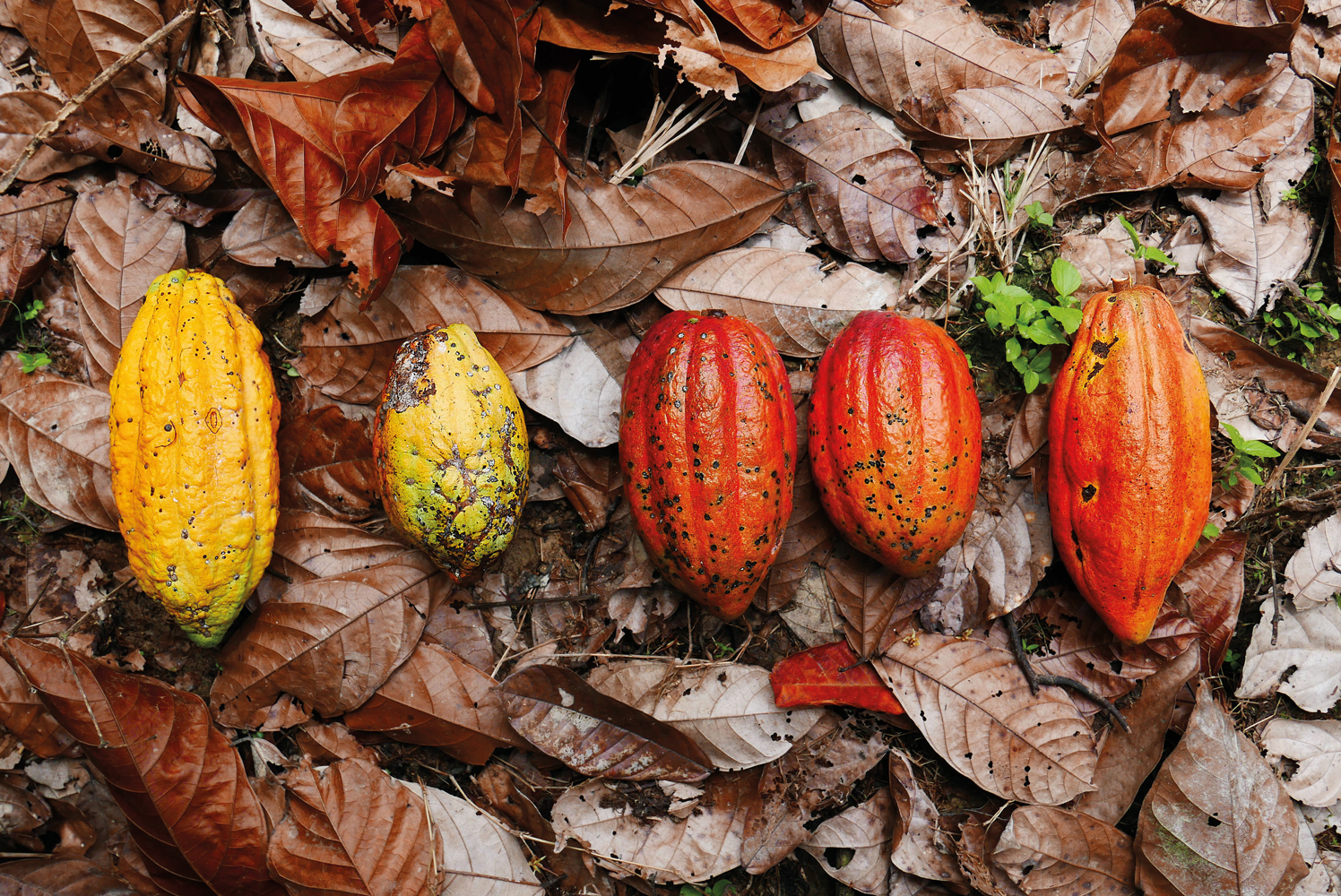
Beyond the bonbon
These prized, perfectly formed squares and bars may not look it, but
the time and toil taken to produce them is nothing short of mindboggling.
“Chocolate is a finicky product to make due to its load of
techniques and yearly changes in nature. Things can change a lot
during the process, and adjustments must be made to ensure the
final product comes out right. There's no real way to learn except
through trial and error,” Chua expresses.
Chocolates at Theo & Philo are made with a combination of
traditional and modern processes: an old-school melangeur using
only natural ingredients and a modern tempering machine for
higher consistency. Their cacao beans come mainly from the Davao
area and are chosen based on their flavours – it has to be wellfermented, with complex flavours, no off-flavours and defect-free.
Chua adds that they are also working with Gawad Kalinga, a nonprofit organization in the Philippines, to make a better life for the
cacao farmers. Pham, who trained at Ghent University in Belgium,
uses an environmentally-friendly permaculture model, which aims to give back to the land it takes from. They have also developed a
cacao fermentation process that is unique for the cacao beans on
their farm, designed to bring out the optimal flavors based on the
time of year, weather condition, and state of the crops.
"Juice, pressed from cacao pods, will be fermented into Cocoa
Cider while the beans are fermented based on our tailored recipe.
The beans are then slow-dried to preserve flavour while removing
excess acidity. This takes a delicate balance and careful observation,”
Pham says.
The dried beans are stored in their warehouse to age for at least
another two months for the flavours to develop completely before
being processed. After a quality check by hand for defects, beans
are roasted, broken into small bits and separated from the shell.
This results in cacao nibs, which are then milled with cane sugar in
a stone grinder over the course of many days into a fine chocolate
mass, which is tempered, molded and packaged into bars and ready
to be consumed. Pham explains that their chocolate carries the
signature profile of Vietnamese cacao, which has pronounced nutty
and fruity base flavours.
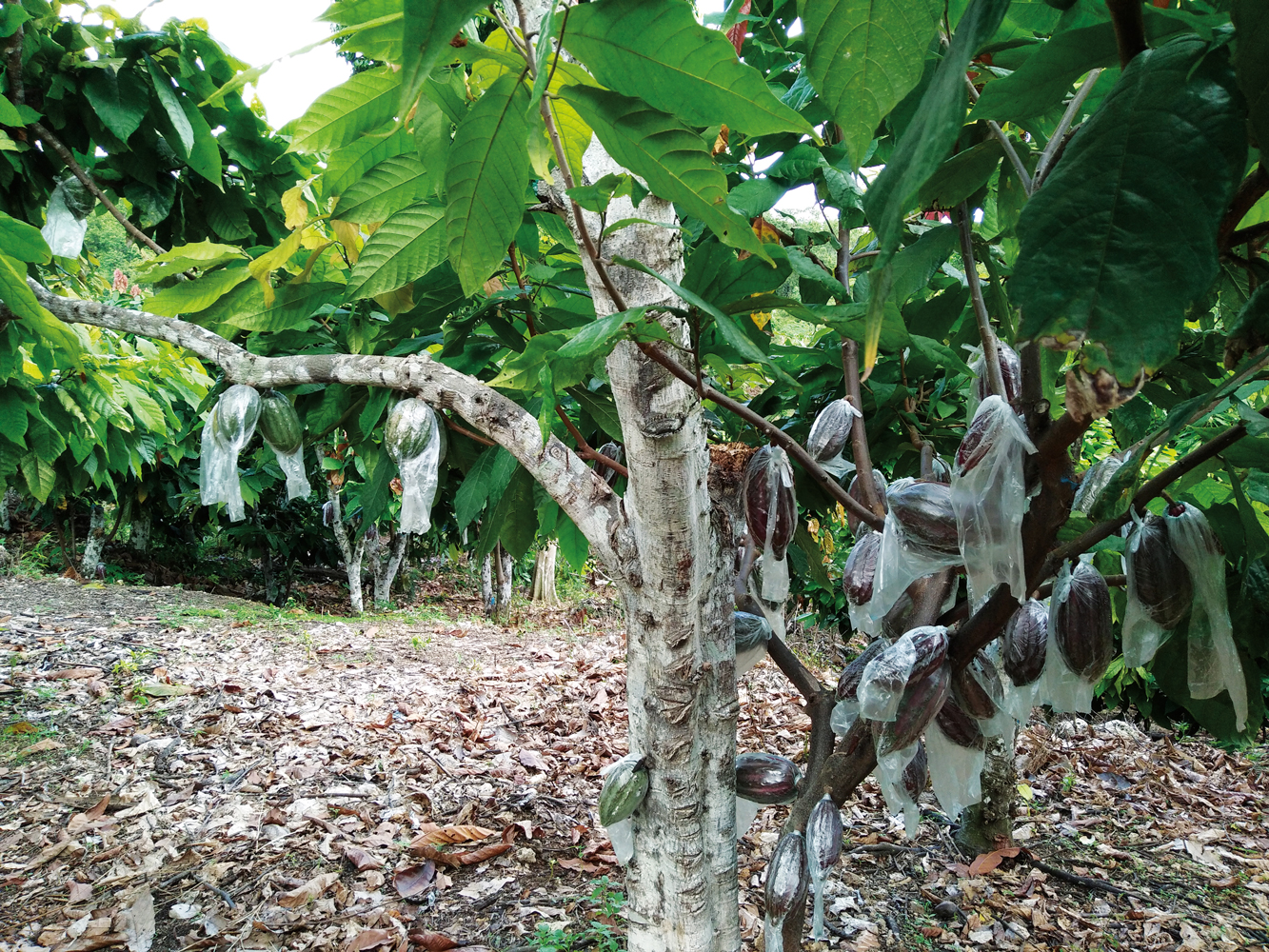
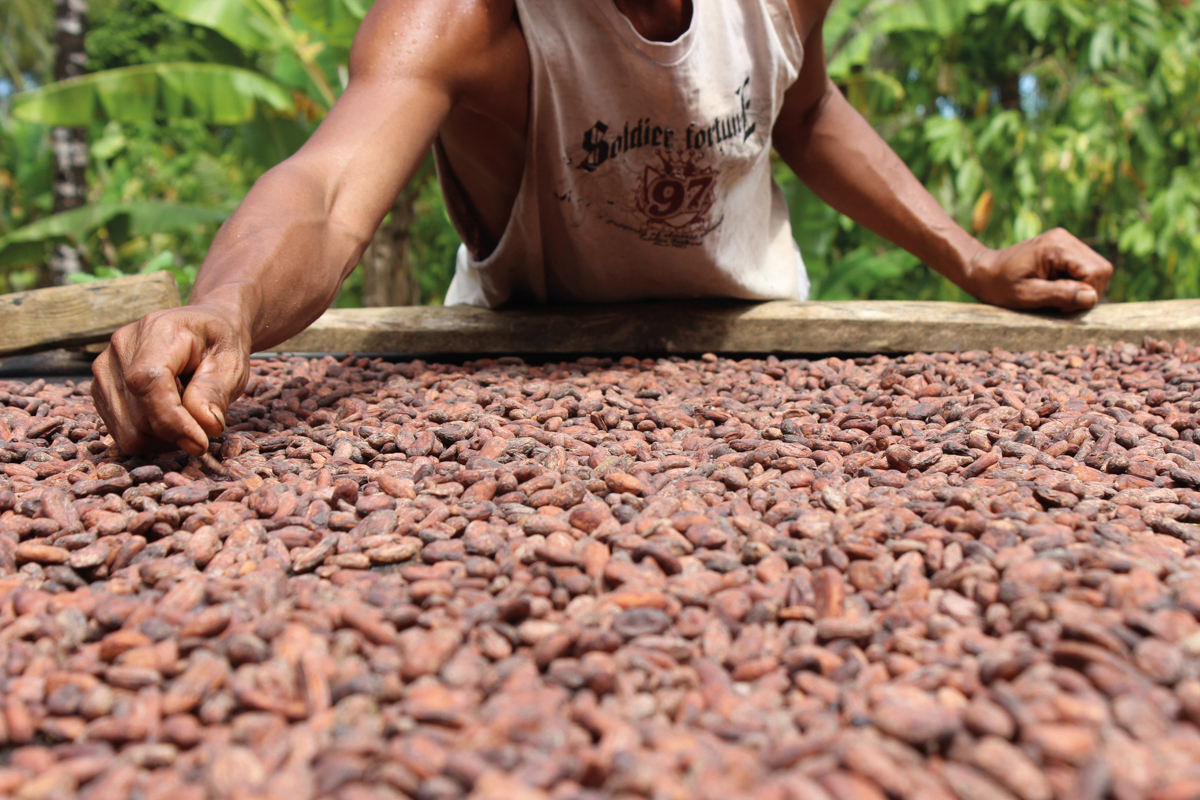

Mustopo, who also trained at Ghent University, shares the same
sentiments. Chocolate making is complicated because there are so
many different variables that have impact on the final product, she
says. Factors such as varietal, terroir, fermentation and drying, roasting
profile – they all have an impact on the flavour of the final product.
Mustopo explains, “Unlike other chocolate makers, we not only
purchase the beans but also train the farmers to develop the right
fermentation and drying process to create beans with the unique
flavour profile we want.”
Krakakoa requires their farmers to adhere to
sustainability practices and have zero tolerance
for deforestation or encroachment of farmland
into protected or conservation areas. The farmers
would have also received training on organic farm
management techniques to help ensure quality.
Fossa starts by sourcing for cacao beans that
have great flavour potential and are ethically
produced. They pay a premium to obtain the
top five percent of the world’s cacao crops from
farmers and distributors who care about quality
and craftsmanship. “After roasting, we break the
beans and remove the husk in a process called
winnowing. The nibs are then collected and
grounded in a melangeur with sugar (depending
on recipe), smoothening the texture and refining
the flavour of the chocolate. Finally, we temper
and mould the chocolate into bars. Entire process
takes about seven days per batch,” says Jay Chua,
“Curating cacao with diverse flavours allows for a
versatile canvas to complement other ingredients.
We strive for harmony in flavours - unexpected
ingredients can make delicious chocolate with the
right combination of cacao”
Having experienced the unique cocoa flavors
from each growing region and estate, Ong is
deeply committed to Malaysian cacao, making
dark chocolate from only single origin beans of
cacao, sugar and cocoa butter. The beans come from either what he
grows, other partner growers or the Orang Asli (indigenous people
of Peninsula Malaysia). The key is to unlock the distinctive flavours
of each origin in the final chocolate.
“Our joy is to share and make each of these origins' flavours
and stories accessible,” Ong maintains, “Chocolate is first grown
before being made. This means that it is dynamic, and this is what is
exhilarating for makers. Each harvest is unique, and we celebrate it
by bringing out its best. If we can do that, then we've done it justice.”